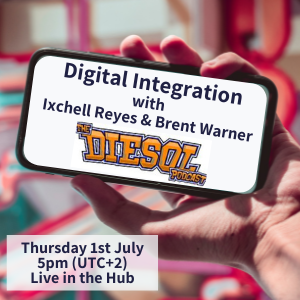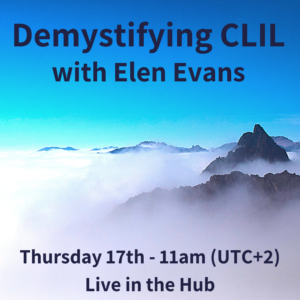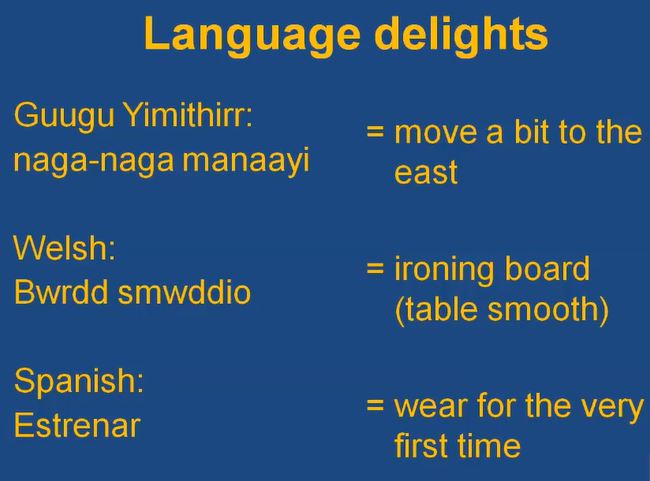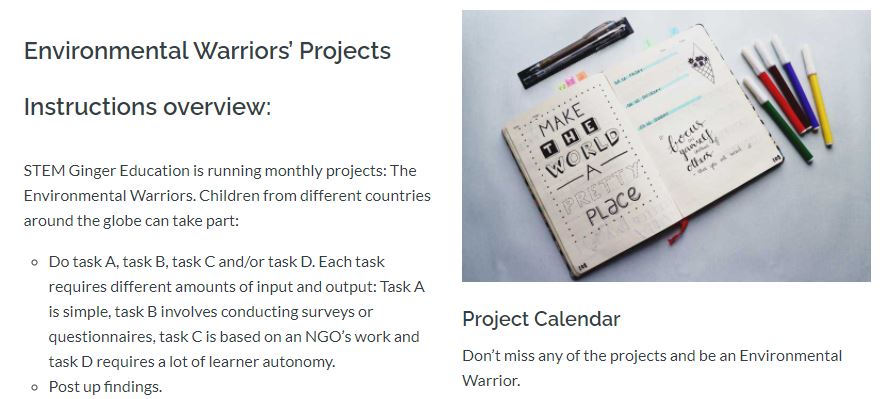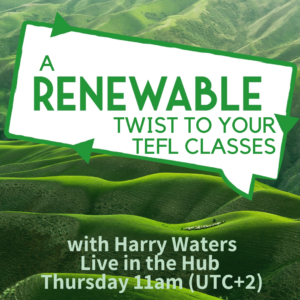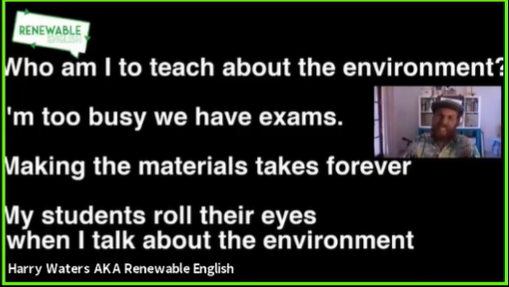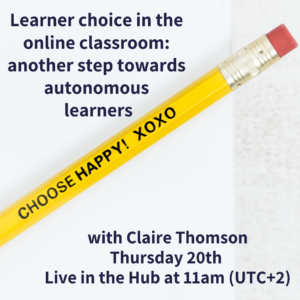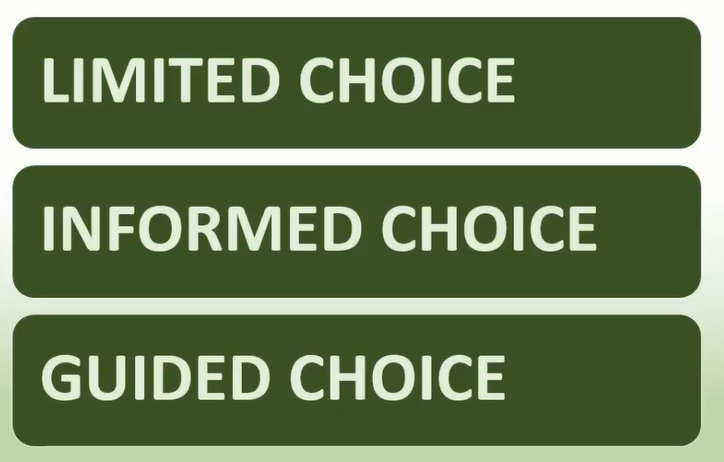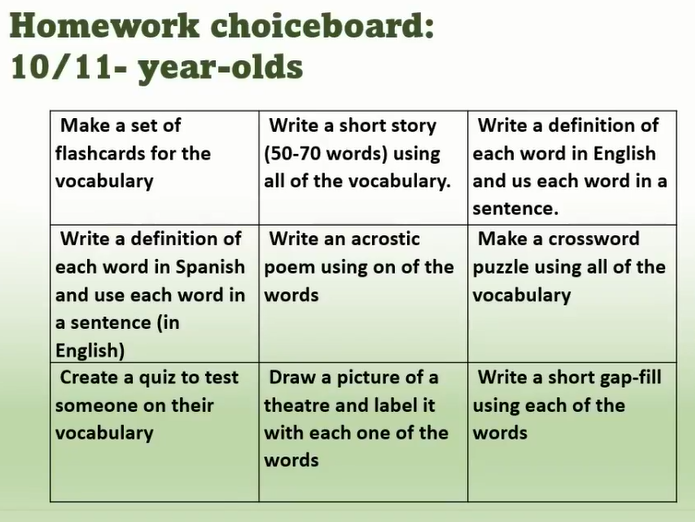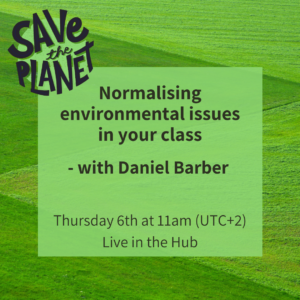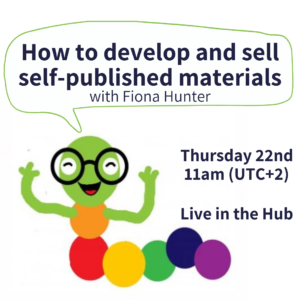Thanks to the power of the PLN, after a tweet I sent out a couple of months ago, we were joined by the fabulous hosts of The DIESOL Podcast, Ixchell Reyes and Brent Warner. Ixchell started out as a kindergarten teacher, but always wanted to teach language and has been teaching in adult education for around the past 12 years. Brent started working in ESOL during college and spent a few years overseas before returning to California where he and Ixchell met. Brent used to run another podcast which Ixchell listened to before they met as there was a lot of resistance in her context to integrate tech into lessons. Their idea for The DIESOL Podcast came from a similar idea: that they couldn’t find what they were looking for and also wanted to share their passion for edtech with others. Even before the pandemic, learners and teachers had access to so many resources that they could use to make the language learning process more effective but there was often a feeling of ‘why do we need to add something new?’ in many contexts.
How do they develop an episode?
They get a lot of inspiration from what’s happening in the broader edtech world and see what people are chatting about on Twitter. The podcast sometimes involves an interview with either someone who’s working in ELT and integrating tech into their lessons, or with someone who’s working in edtech but not necessarily limited to the world of ELT. Then they also run shows to look at a product or topic. They start by sharing some background on the topic – and one thing I love from their website is that they talk about “thoughtful, pedagogically sound approaches” – and then go on to share some practical ways to integrate tech into the topic or classroom. Sometimes it can be a problem-solving approach, as if they’re aware that something is an issue in their own context, it’s likely it’s happening in other contexts too.
Jumping the gap
We talked a little (obviously!) about the impact of the pandemic on edtech and how many less experienced teachers suddenly became the experts people turned too as they were more familiar with edtech and how it could be used effectively. Ixchell made a great point as well that if you let the gap between you and tech grow, the jump you have to make to close the gap becomes scarier the larger it is. When we were suddenly forced to jump, some people had a small gap to cross; for others, it felt like a chasm. But, it’s definitely part of your mindset as well and those who have the support to learn and are open-minded towards the process will be able to bridge the gap more easily.
What are their top tech tools?
Brent says Google and the G-Suite tools are in his classes everyday. They give learners easy access to everything you’re doing in class, plus you can add comments and annotations easily. There’s also a great add-on, Mote, which allows you to add audio into the Google file. There were some comments in the chat around the use of Google from concerns around it being an omnipresent data gatherer to the challenges of learners using Google Translate and submitting poorly written assignments and how we can teach them to use the tools available to them – perhaps not to encourage them to use them in class but to give them the skills to use them effectively in the future.
He says podcasts are also a great resource for learners as they can listen to English and pursue their own interests – a huge boost for their intrinsic motivation. We’ve chatted in the Hub before about how we rarely consume audio content without visual support nowadays and so encouraging learners to listen to podcasts also provides them with that exposure to audio-only content, particularly useful for learners who are preparing for exams with an audio component.
For Ixchell, Google docs is also a big favourite, particularly as it allows for learners to collaborate in real-time (and asynchronously). Another bonus of using Google docs is that learners don’t need an account to be able to contribute. Access, particularly when working with students based in different countries, is an important factor to consider with edtech as there might be limited access to certain apps and websites in some places.
Flipgrid is another firm favourite with lots of great features such as allowing learners to hide their faces or adding captions. If you’re looking for inspiration on how to incorporate Flipgrid into your lessons, check out this episode of the podcast.
Adobe Spark is a simple interface which allows learners to illustrate without requiring a lot of tech skills (more on how to use it in this episode). This is fabulous for allowing your creative learners an outlet and also a great tool to provide visuals as a teacher. Brent adds that these last two have really inspired learners to do more outside the classroom as they’ve enjoyed using the tech so much.
For more of their favourites, check out the episode 21 Tools for 2021.

The ‘bells and whistles’ of edtech
There are a lot of apps for language learning which aren’t developed by linguists and are probably developed for the market to make money rather than actually support language learners. Brent and Ixchell are keen to promote free resources which support language learning and will empower teachers to explore the tools available to them, so they spend time researching tools and identify how effective the tools they present will be. Ixchell talks as well about getting feedback from the learners about the tech she uses in class as a way of measuring its effectiveness and whether to use it again in the future. Brent mentions how learners (and teachers) access the tool as well: is it an app that needs to be downloaded? Is it a website that people can access easily from anywhere? What about wi-fi connection and memory?
New to Clubhouse
Speaking of apps which are limited to only one platform, Clubhouse is now available on Android after originally being developed as an Apple product. And Ixchell says that another joy of working in edtech is that just when you think everyone’s tired of a particular product, you realise that it’s new for someone.
It’s like talk radio in an app so you can choose from different rooms to go into and listen. However, if you do want to interact, you can raise your hand and might be invited to the stage to ask a question or add a comment.
It’s not limited to ELT, so there are rooms on a wide variety of topics and you can come and go as you like. For example, Ixchell mentions a lullaby club – a group who get together and whisper their songs around 11pm. Brent says there are a lot of conversation clubs happening too, with langauge learners from around the world coming together to chat – another way that tech is empowering learners to take learning into their own hands.
Will tech ever replace teachers?
Brent feels that top-down teaching may be on the way out – lecture halls might disappear as learners will be able to access this type of content in a different format. Labs and small group contexts which allow learners to interact will become more important. Furthermore, in terms of the teacher, a person who can give feedback and make adjustments as a learner goes through the process (‘the guide on the side’) will continue to be important. As well, learners will continue to need support in how to take responsibility for their learning, so someone who can provide them with vetted, effective resources will still be required.
Ixchell agrees that there’ll be a shift but that we won’t be replaced (phew!). She says that while students can still learn without having a physical teacher, the motivation of engagement and interaction can’t be fully replaced. She says that an online search might be the first step but that she then goes on to look for a human guide, adding that there’s something technology and algorithms will probably never be able to replicate.
This question generated some lovely comments in the chat on Facebook too, with some people talking about a move towards coaching or mentoring more than teaching and the role of the teacher to facilitate, rather than direct, learning. For more on encouraging independent learning, check out this episode of the podcast.
Bringing tech to life
We touched briefly on the challenges of showcasing tech tools in an audio-only environment. Ixchell highlighted that the podcast is less about teaching people how to use the tool, but rather giving them ideas for how to incorporate it. They hope that the podcast motivates people to look into the tools available and although they would like to do some ‘deep dives’ into topics or products, it’s sometimes difficult to make this content engaging for listeners.
How has podcasting helped them as teachers?
Ixchell says that listening to other people’s podcasts in preparation for high-interest episodes helped her to grow as a teacher and increased her knowledge of the tools that are available. SHe says as well that introducing her students to podcasts has really helped them in their preparation for the TOEFL exam as they are able to listen to topics that interest them and this in turn helps build their vocabulary. Brent adds that it gives you the opportunity to interact with other people, especially in the world of teacher podcasters. He says teachers who podcast tend to be very motivated and motivating so can give you a boost when you need it.
We hope you enjoyed the chat and take a listen to the podcast on Apple, Spotify or via their website (and please leave a review if you’re listening on iTunes).
If you’re interested in getting in touch with Ixchell and Brent, you can find them on Twitter:
They’re also interested in hearing from teachers to get involved in the podcast, so do get in touh if you’re using a particular tool or a special edtech focus.
Some questions to reflect on:
- How has your relationship with edtech changed since March 2020? How do you think it will develop moving forward?
- Is the tech you’re currently using in lessons pedagogically sound?
- What tools have you heard about that you’d like to try? How can you find out more about them?
